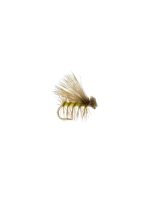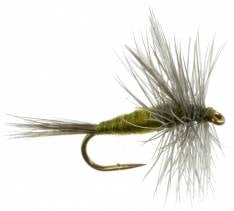Introduction: Ahoy, fellow fishing enthusiasts! If you’re ready to dive into the world of fly fishing, then prepare yourself for a journey that combines finesse, technique, and a dash of whimsy. How to Fly fish is like learning an art form, where you dance with the water and tantalize the fish with a meticulously crafted artificial fly. In this guide, we’ll equip you with the basic knowledge to get started on your angling adventure. So grab your waders and let’s wade into the witty wonders of fly fishing!
Gear Up for Success
Before you can master fly fishing, you need the right gear. Some of your equipment will last you your whole life if cared for, and other items are consumable and will need to be replenished as you learn how to fly fish you favorite stream.
Here’s what you’ll need to become a fly fishing maestro:
A fly rod:
The fly fishing rod is the number one ingredient to a great kit. Starting out, you should opt for a 9-foot rod in the 5 weight range for maximum versatile, performance and overall good action on most trout rivers and streams. If you plan of fishing for salmon in Alaska or Peacock Bass in Brazil, you will need much heavier weight gear. A great 5 weight fly rod is the Moonshine Drifter series. In a sport where you can spend as much money on gear as you want, the Drifter is built to balance quality and cost. It provides a great platform and as your skills grow, you may find yourself getting longer or shorter rods in different weights for different watersheds.
A fly reel:
Second only to a great rod, the reel is where you’ll store your fishing line and crank in the monster fish. The key here is you want a quality fly fishing reel that has good balance The good news is there are a ton of great, high quality options out there these days. Make sure your first fly fishing reel is sturdy and balanced with your rod. Did I mention balance? Yeah, it’s that important and you’ll know why after you flick you fly all day. I’m partial to Sage reels as they are top notch in quality, but they are also making some great entry level reels such as the Sage Spectrum C. Or go all in on the Sage Trout series which has a gorgeous finish and a brilliant drag systems for when you truly hook a monster and need to let off the friction fast.
Fly line:
It’s the lifeline connecting you to the fish. Choose the weight according to your reel selection. You will need backer wound onto your reel, then the fly line of your choosing. Fly line comes in a variety of designs, and while it can be confusing, there are essentially two kinds: floating and sinking. Floating line is what’s used for the majority of shallow water fishing, but when you are trying to go deeper and strip streamers or wooly buggers, sinking line is your choice.

Waders & Boots:
Even on a beautiful sunny day standing in a mountain stream can get down-right bone chilling. Fly fishing waders are essentially waterproof pants that you wear to stay warm. While not necessary when fishing in warm climates, they are an absolute must in cold water. Waders come in two styles: stocking foot and integrally booted and are made out of breathable materials or neoprene. My favorite style is a breathable stocking foot wader which let’s me choose a wading boot that fits the waterway I’m fishing. Most of the time, I use a carbide lugged wading boot , and have virtually abandoned my felt sole boots. Simms makes a bomb-proof set of waders and the Simms Freestone series waders and Freestone Wading Boots will keep you warm, dry and last a long time.

Lanyard, Vest or Chest Pack: By the time you get fishing, you will realize you have a lot of stuff to hold while standing in the middle of a river. Flies, tools, tippet, that granola bar – it’s all got to go somewhere. I started out with a full vest then switched to a chest pack like the picture on the far right. Everyone has a different style and carries different amounts of gear, so you may want to build out your full fly fishing kit before you settle in on one style. As you learn the gear that you do and don’t use on a regular basis, you can start backing off what you take into the river. Many fishermen have scaled back to the point that they can go with just a lanyard and a few tools. It really is personal preference here and you many end up trying a few styles before you settle on one.
Fly Boxes:
When you start bringing home fly fishing flies, you will quickly realize you need some sort of storage system. typically flies are bought in bulk and transferred into a fly box for ease of access and to ensure you don’t drop the bunch in the river. Fly fishing boxes come in a wide variety of designs, but what I’ve found is they can get too big to deal with in the middle of the river. Keep the width under 4 inches so you have lots of options on where to stash your flies. These FishPond Tacky Silicone Fly Boxes are almost perfect for a good range of patterns. The silicone inserts make then easy to use and durable. And, the magnetic closure system is a dream to use.
Tools
Nippers: This is the one tool you will use the most. There are several designs out there and quality can vary widely. You want a set with a precision ground edge that cuts fishing line like butter. The spike on the opposite end is nice for clearing epoxy or paint out of the eye of a tiny fly hook. Make sure the point is super fine or it wont work.
Pliers – Needed to remove hooks from fish, your leg, etc.
Knot Tool – these help some people learn to tie fly fishing knots. I’ve never seemed to get the hang of using the tool. your mileage may vary.
Magnifier – small hooks and old eyes don’t mix. Having a set of magnifiers is a godsend when you’re in the middle of the river rebuilding your rig.
Net – Landing fish without a net is a gamble. Get a silicone net for ease of use.
Consumables
Leader and tippet: These invisible threads ensure your fly lands gracefully on the water. Keep them in different sizes for various situations.
Flies: The pièce de résistance! These little beauties imitate insects, baitfish, or even small mammals to tempt the fish. head over to the stores to find the selection that right for your local rivers.
Casting Spells
Water Fly fishing is all about the cast, my friend. Here are the basic steps to master this magical maneuver:
- Hold your rod as if you’re shaking hands with a friendly leprechaun.
- With your fly line extended in front of you, bring the rod tip back, imagining you’re tossing a frisbee to a mermaid.
- Accelerate your rod tip forward and let the line slide through your fingers, much like unraveling a sneaky riddle.
- Gently arrest the forward motion of the rod, releasing your line onto the water’s surface with the grace of a swan. Voilà! Your fly is now dancing on the water.
Know Thy Prey
To outsmart fish, you must think like one. Each species has its own quirks and preferences. Here are a few common ones:
- Trout: These cunning creatures love insects. Present them with a fly that matches the hatch, and you’ll have them nibbling at your creation.
- Bass: These brawny fighters have a weakness for small baitfish. Mimic their favorite snacks, and they’ll follow your fly like groupies at a rock concert.
- Salmon: These magnificent beasts are often found in rivers and are drawn to flashy, colorful flies. Think disco balls in the water, and you’re on the right track.
Play the Waiting Game
Once your fly is in the water, it’s time to play the waiting game. Be patient, my eager angler. Let the current carry your fly, imparting a lifelike motion that attracts the fish. Observe the water for any signs of movement, ripples, or suspiciously swaying seaweed. Remember, the key to success is to have the patience of a saint and the curiosity of a cat.
Hook, Line, and (Fishy) Sinker
When a fish takes the bait, you’ll feel an electrifying tingle through your line. This is your moment, so be prepared to strike! Swiftly and confidently, raise your rod tip, setting the hook into the fish’s mouth. Reel in your line, keeping steady tension, and admire your catch as you lift it out of the water.
Release and Revel
Now, my dear angler, it’s time to decide the fate of your finned friend. If you choose to release the fish, handle it gently with wet hands or a net to minimize stress and damage to its delicate scales. Hold it horizontally, support its belly, and snap a quick photo for the memories. Then, lower it back into the water, allowing it to swim away gracefully, as if it were blowing a grateful kiss.
Etiquette and Fishy Tales
As you embark on your fly fishing adventures, it’s essential to respect the waters and fellow anglers. Here are some tips to make your experience enjoyable for everyone:
- Respect the environment: Pack out what you pack in. Leave only footprints and take beautiful memories with you.
- Mind your casting: Avoid casting over other anglers’ lines or in close proximity to them. Give each other ample space to work their magic.
- Share the love: If you stumble upon a fellow angler struggling with a tangle or a challenging cast, offer a helping hand. After all, we’re all fishy friends in this vast watery realm.
Fly fishing is more than just a hobby; it’s a dance with nature that nourishes the soul. With the right gear, a bit of wit, and a sprinkle of patience, you’ll be ready to charm the fish and create unforgettable moments. So, grab your gear, embrace the rivers and lakes as your stage, and embark on a fly fishing adventure like no other. May your lines be taut, your flies be irresistible, and your fishing tales be as legendary as the ones that got away. Tight lines and happy angling!
Remember, the key to maximizing the search engine optimization (SEO) for your blog post is to incorporate relevant keywords throughout the content, such as “fly fishing for beginners,” “fly fishing techniques,” “fly fishing gear,” and “how to cast a fly rod.” Additionally, ensure your meta description includes a concise summary of your blog post and use subheadings to organize the content effectively.











